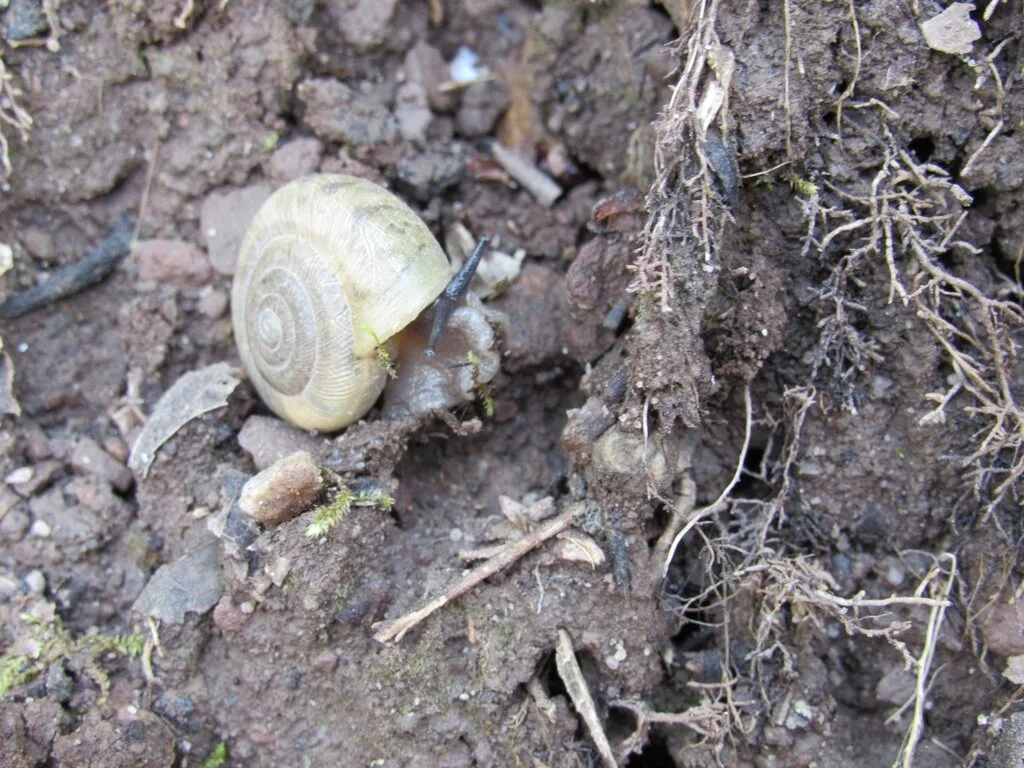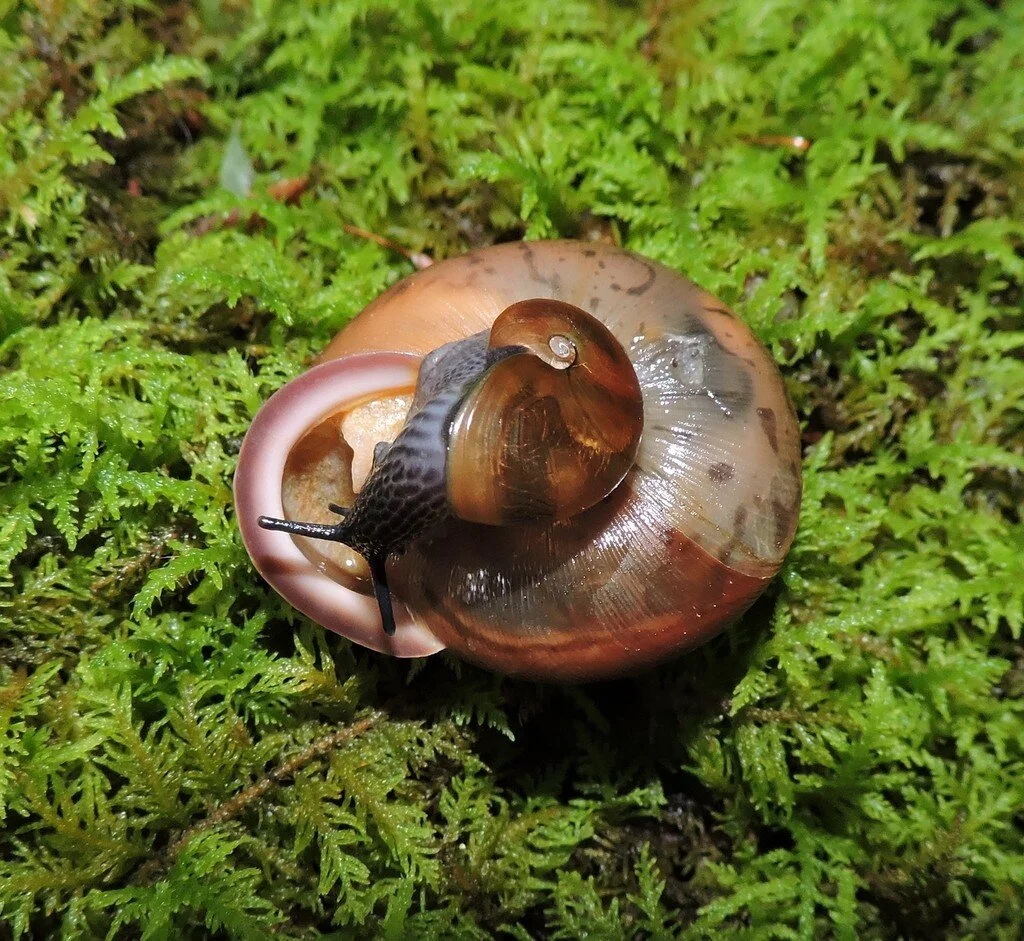Remote Rally Going Strong
Another stellar day on the iNaturalist Project! The leaderboard shows 97 observers with over 2,800 observations and 840 species…WOW! This is so awesome! The May 5th BRDC species t-shirt winner was ‘themadcollector13’ (Shawn). Congratulations and keep the observations coming!
Our highlight observation today is the gray-foot lancetooth snail photographed and posted by Carrie Holt. Here is what naturalist Cade Campbell has to say about it:
Photo by Carrie Holt
“Hello, fellow naturalists! As I was looking through some of the observations on the MRNR Backyard Naturalist Rally project, I noticed Carrie Holt's (@csholt) observation of a gray-foot lancetooth (Haplotrema concavum) from Saltville, Virginia. This awesome snail is widespread throughout the Blue Ridge Mountains, and lives under leaf litter. They have pale, gray-white shells which give them an almost bleached, skeletal appearance. The shell itself spirals similarly to the horns of a bighorn sheep, or a garden hose. But aside from its unique appearance, Haplotrema concavum has plenty more tricks up its "sleeve." Or should I say, "shell."
Photo by Cade Campbell
The gray-foot lancetooth is predominantly nocturnal, waking up from under the deciduous forest floor to roam across the ground or up the trunks of ambient trees. Not in search of vegetables, but instead, other snails. H. concavum is famous for hunting other snail species with a fascinating methodology. Creeping up beside an oblivious snail, such as a whitelip (Neohelix sp.) or globe snail (Mesodon sp.), they will use their sharp, calcareous radula (ring of "snail teeth" hidden inside their mouth) to "drill" inside the shell of their prey (Pearce & Gaertner, 1996). Once the shell has been penetrated, they engage in a slow-motion attack on the snails; similar to wolves taking down an elk or deer. This has earned them a fitting nickname; the "wolves of the snail world" (Dourson, 2013).
Photo by Cade Campbell
Despite this crazy, bloodthirsty life history, Haplotrema snails are relatively common and very easy to identify. The species name "concavum" comes from the snail's wide umbilicus. The umbilicus is the "hole" or "bellybutton" (or lack of one) on the underside of the snail's shell. Since the gray-foot lancetooth appears to be "coiled up" like a rope, the umbilicus is very wide and open. Also, the snail has a pale gray body to match the shell's appearance. Two other carnivorous snails are native to the Southern Appalachians, but both of these are bright blue, and one is endemic to the Smokies. The other, Vitrizonites latissimus, is endemic to the Southern Blue Ridge and has a fascinating natural history of its own. Cheers and Happy Adventuring, CADE CAMPBELL
Vitrizonites latissimus by Cade Campbell
You can see @csholt 's observation here: https://www.inaturalist.org/observations/44838312.
It’s not too late to join the fun and our iNaturalist project. Visit our website to purchase rally tickets and raffle tickets for great giveaways and prizes. The weekend is fast approaching and we still have lots in store for you!



